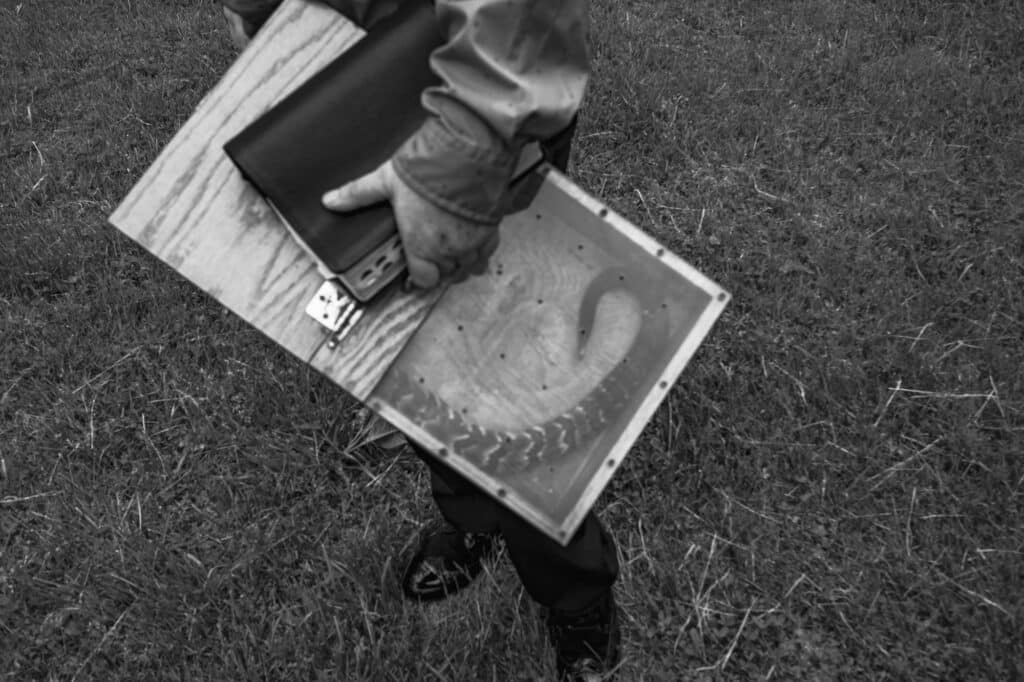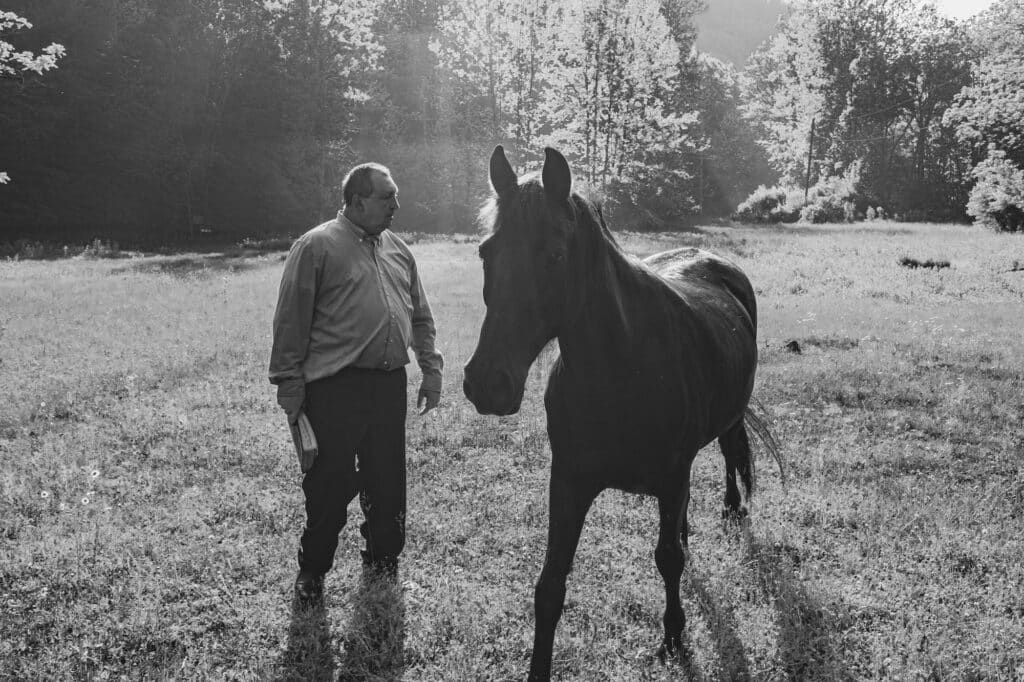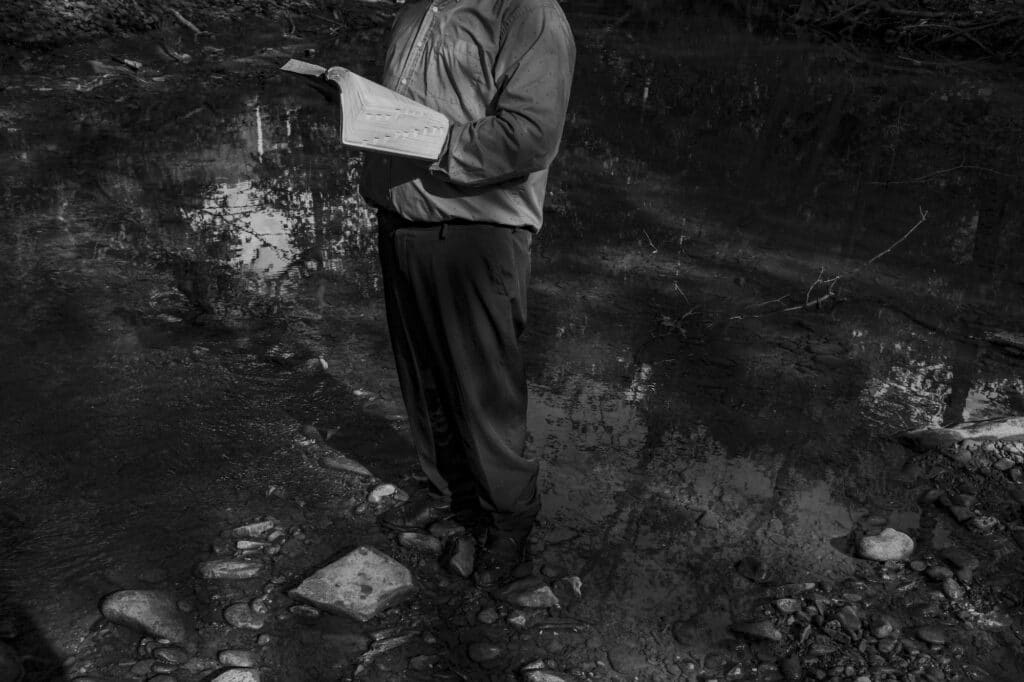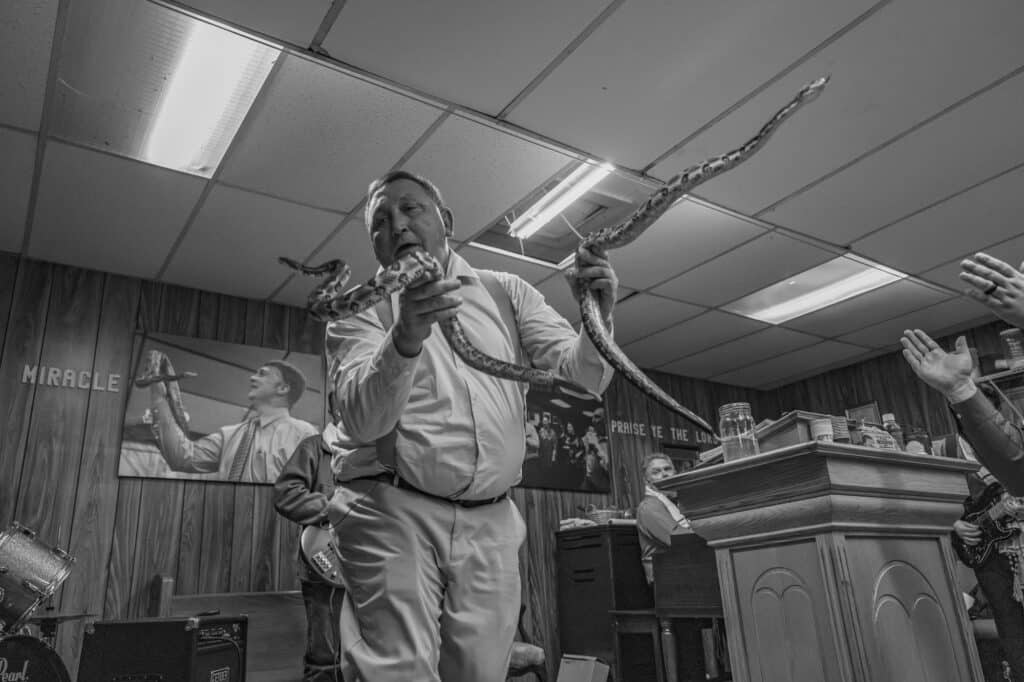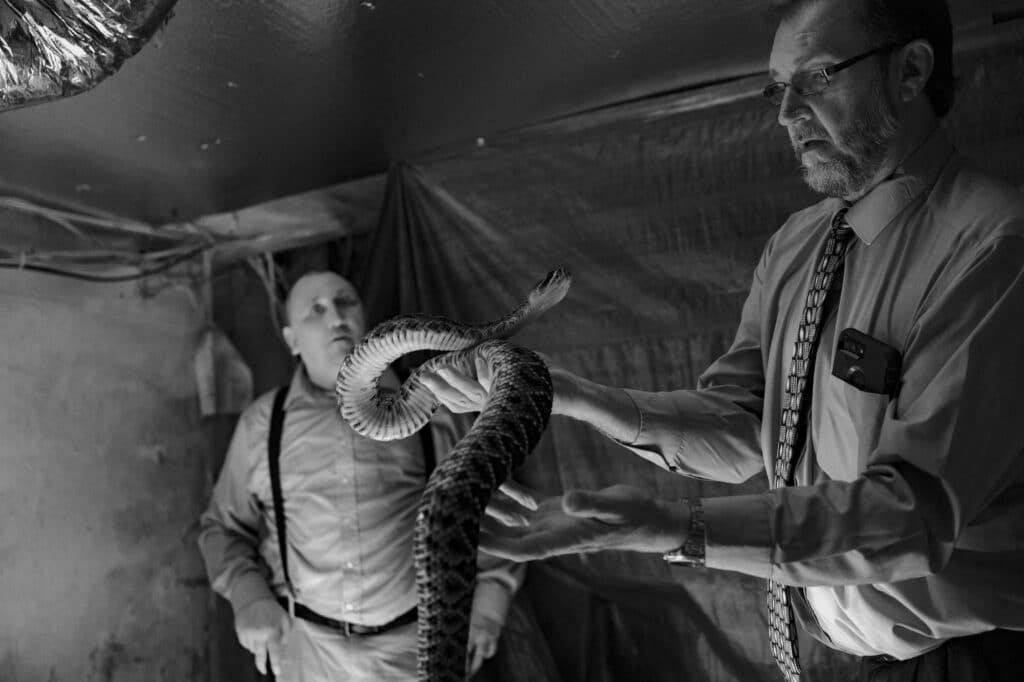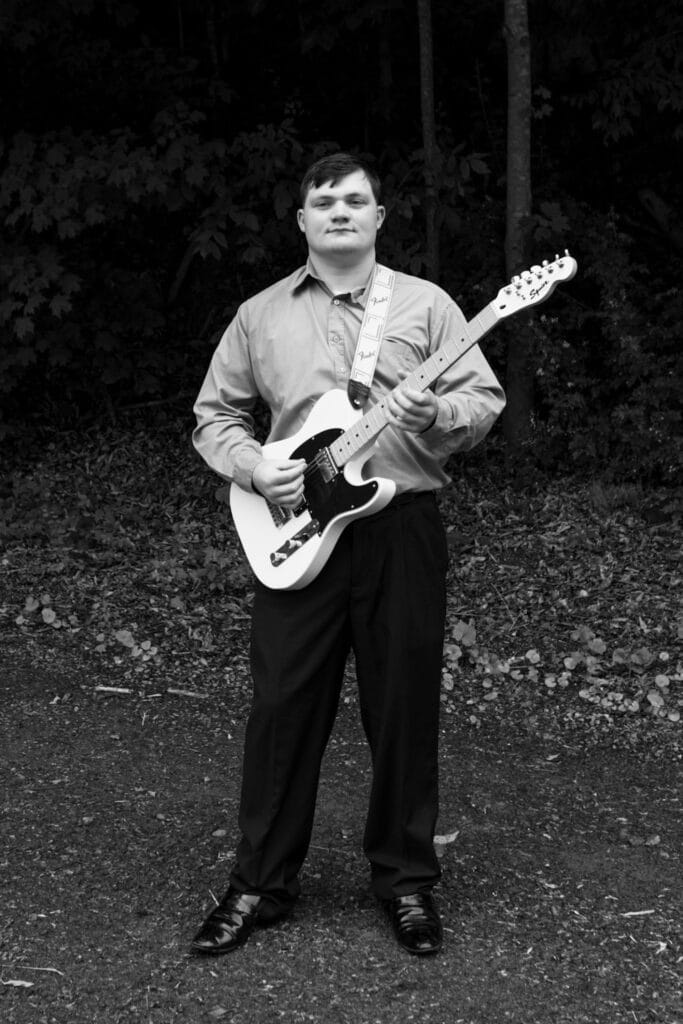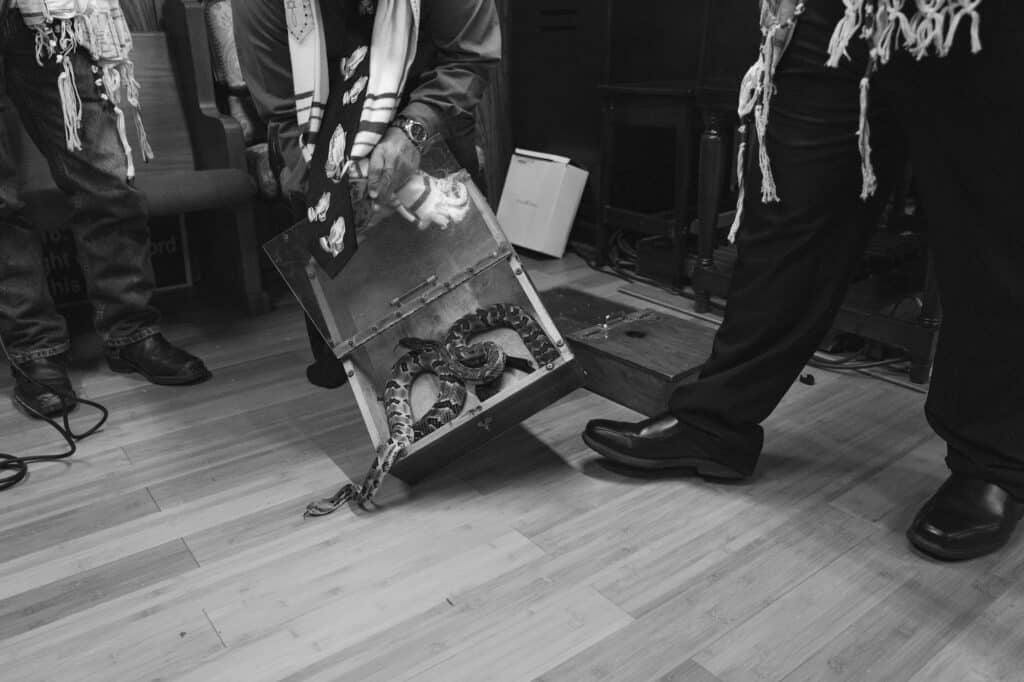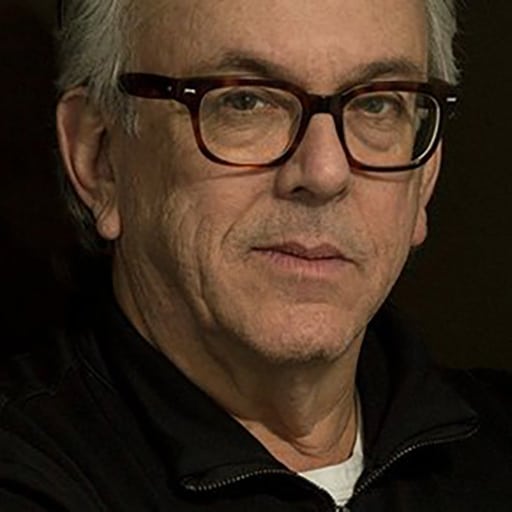American photographer and filmmaker Robert LeBlanc loves chasing the stories that lie between the lines, finding poetry in the margins and giving a voice to the unheralded. His work displays intense rawness, up-close proximity, and a willingness to stay the course until the substance is revealed. Whether documenting hotshot firefighters in the western United States, embedding with skateboarders defying both gravity and the law, or gaining the trust of some restless residents of Detroit and LA as they illegally race cars in the streets, photography is LeBlanc’s ticket to enter.
In perhaps his most powerful, disquieting body of work to date, LeBlanc has created GLORYLAND, a unique piece of art in the body of a bible. Printed on Scritta bible paper with oversewn binding and embossed front and back covers, the book mimics and pays homage to the very vehicle that guides followers of the tenets of a fading adherence to scripture. The artist spent five years gaining the access and trust of Chris Wolford, the pastor of The House of The Lord Jesus, a Holiness church where congregants handle snakes, drink dangerous liquids, and give themselves up to the promise that unquestioning belief in the power of Christ will protect them from these decidedly risky practices and lead them toward salvation.
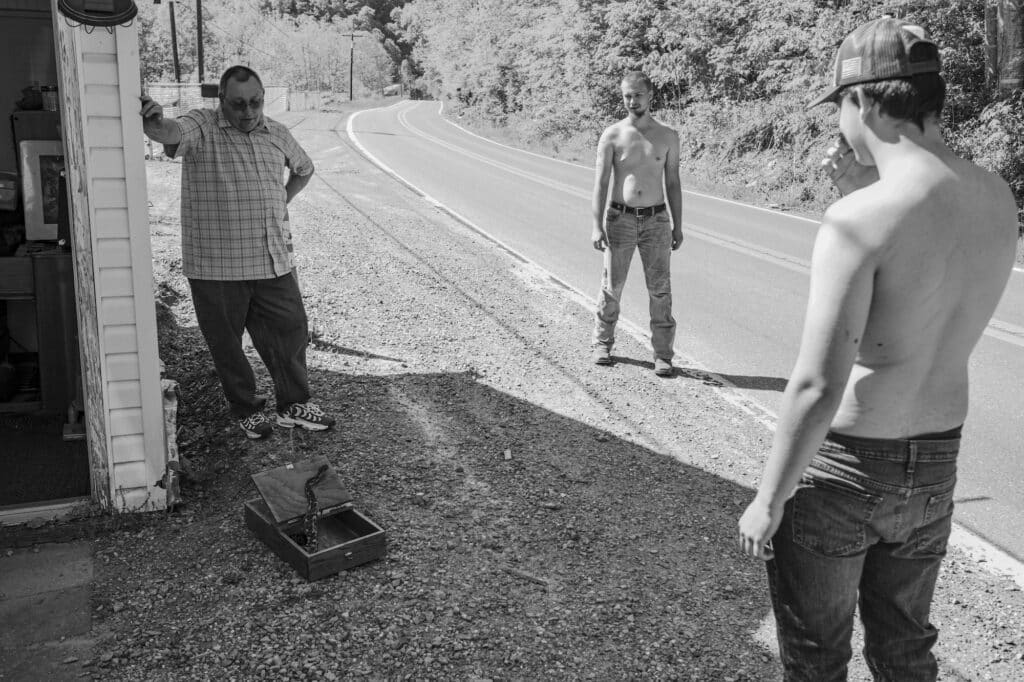
“In my name shall they cast out devils”
The House of The Lord Jesus is deep in the Appalachian Mountains of southern West Virginia in the unincorporated town of Squire. With a population of approximately three hundred, Squire is seven miles east of Horsepen and four miles north of the hamlet of Cucumber, population seventy-four, villages smack-dab in the heart of coal country, a place of hardscrabble lives filled with long days working underground, and for some, a place where Sundays are dedicated to repentance.
In the eighteenth-century, English cleric and evangelist John Wesley — credited as the founder of Methodism — proclaimed that there are two “blessings” that are necessary for salvation: justification (a believer’s conversion) and sanctification (an individual’s purification). But by the twentieth century, a third blessing had been embraced by Holiness church followers (also known as Pentecostals) that stated, “And these signs shall follow them that believe; In my name shall they cast out devils; They shall speak with new tongues; They shall take up serpents; and if they drink any deadly thing, it shall not hurt them; They shall lay hands on the sick, and they shall recover.”
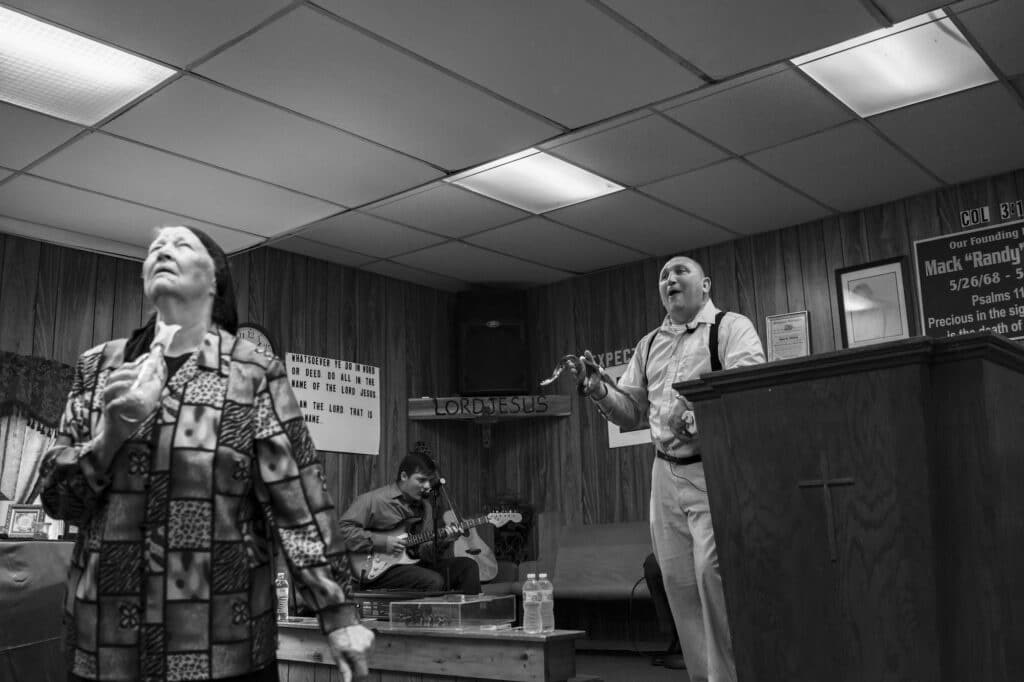
As LeBlanc writes in this fascinating book, “As you walk down the center of the church you see women laying on their knees bent over the pews praying and crying before the service begins. The sound of rattlesnake rattlers fills the air and multiple boxes are laid out behind the pulpit, while the guitar begins to blare over the speakers at full volume. The music is incredible…with a mix of delta blues and bluegrass, it’s a style of its own and specific to this type of worship within the applications. Women are spinning in their flowing dresses and their long hair is wrapped up in cloths.”
LeBlanc continues “…pastor Chris Wolford grabs a Mason jar. Within it is a mixture of water and strychnine poison. Small dixie cups line the front of the pulpit as he fills one and takes a shot. A bottle is brought out, stuffed with alcohol and homemade wick. He lights the top and flames rise above the glass bottle. He screams passionately in praises as he holds the bottle underneath his chin. He eventually passes the lit bottle to his mother as she also holds it under her chin and begins to spin in circles. Chris jumps and dances in a stomping manner and praises the Lord as beads of sweat and tears stream down his head and face. He reaches and grabs one of the wooden boxes from behind him, and flips open the plexiglass lid. He pulls out a diamondback rattlesnake and holds it straight into the air. He jumps around, dances, and screams in praise as the serpent rests in his hand and looks over the church.”
LeBlanc’s pictures are not unexpected; yet they still create unease. Untitled #2, 2018 reads like a still life from a gritty movie about trailer life — cheap folding table, over-burdened power strip, empty bottles, fish tank with coiled rattlesnake inside, and a framed picture of Jesus standing guard nearby. And resting casually on the top of the snake tank is a man’s hand. Everything in the picture tells us all we need to know about life in this house.
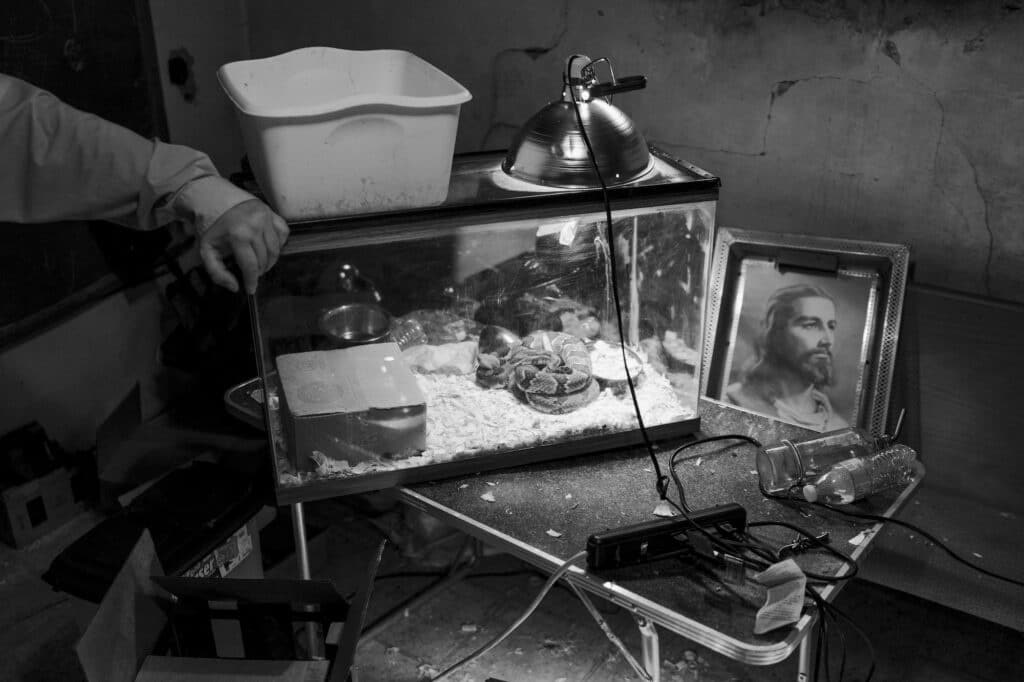
GLORYLAND had to be shot in black-and-white, had to be packaged as a facsimile of a bible, and had to make the reader hesitant to turn the page while being impatient to see the next spread. Southern West Virginia has some of the worst poverty in the US, and with coal mining having stripped the land of so much, the people stuck there often turn to a stark version of religion that pounds away at the idea that we are all barreling toward end times.
Many of the images in GLORYLAND are not for the squeamish, but in Untitled #29, 2021 we come face-to-face with one of many people’s worst fears — the aftermath of a snake bite. A young man with a deadened look on his face is lying in bed holding up his engorged and darkened right arm where the effects of a snake’s bites are glaringly evident. In this instance “the photograph is a cipher” to quote the photographer Eli Durst describing his own efforts at photographing the interiority of faith, “a physical description of a metaphysical dimension, invisible to the camera. It is a photograph of this man’s faith, a spiritual experience from which the viewer is excluded, something very far from fact or objective truth.”
Video stills from the late 90’s of services in similar churches throughout the South adds an eerie punch to this masterful record of a corner of Christianity, and in a nod to the buzzing-fly area of current photography, LeBlanc utilizes artificial intelligence to create pages that reference Pentecostal drawings of fables and old bible stories bringing full circle the reverence he pays to this vanishing sliver of America.
GLORYLAND, by Robert LeBlanc (2023), 18.5 x 13 cm, 378 pages, €41,95.
